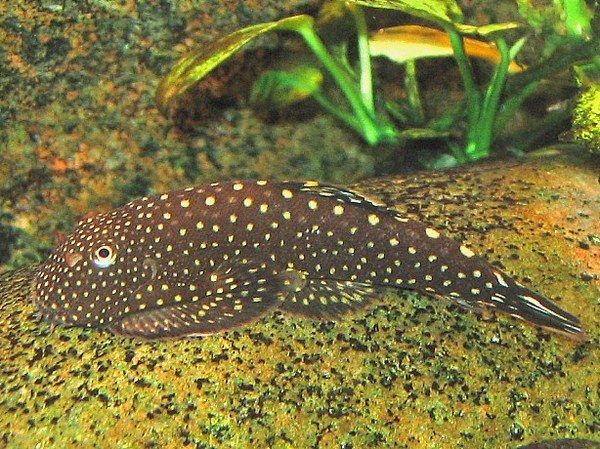Gastromyzon scitulus
Summary
Common name: Spiney-headed hillstream loach (because of confusion with G. ctenocephalus)
Synonyms: None.
Distribution: Sarawak, Borneo. Indonesia. Malaysia.
Sexual Dimorphism: Females generally plumper all over than males. Mature males develop raised areas on first few pectoral fin rays, resembling a line of fences, or louvres.
Maximum size: 2 inches
Similar to: Gastromyzon ctenocephalus

Care: Inhabit fast flowing streams over boulders. Aquarium must duplicate these conditions as fish have very high oxygen requirements.
See: Hillstream Loaches - The Specialists at Life In The Fast Lane for more detailed explanation.
With all Gastromyzon species, care is broadly the same. All need excellent water-flow and aeration, numerous rocky hiding places and smooth pebbles and boulders to graze over. Lighting should be bright to encourage algal growth in the aquarium. Plants are not necessary as the fish do not normally encounter them in the wild, but they will help with water-quality. Suitable plants for high-flow environments are Anubias and Microsoreum. These will grow on rockwork or driftwood.
Feeding: Good quality flake, sinking pellets, algae wafers, thawed frozen Bloodworm, Mysis Shrimp, blanched Spinach, Kale, natural algae an advantage.

Temperature: 68ºF to 75ºF(20-23.8°C)
Breeding: Not bred in aquaria.
Notes
 | Gastromyzon scitulus (TOP) is very similar in appearance to G. ctenocephalus (BOTTOM). They are both similarly marked, but the spots along the back in G. scitulus are generally larger, plus the overall distribution of spots is less dense than with G. ctenocephalus. This species normally lacks the bright white/blue dorsal markings of G. ctenocephalus, and the blue in the caudal fin is broken by irregular vertical black markings, plus longitudal bars, giving an appearance like stained glass panels, whereas in G. ctenocephalus the markings of blue are broken only by longitudal black stripes. |
Photo Gallery
Click to view all images of this species! |
|
Document Actions


